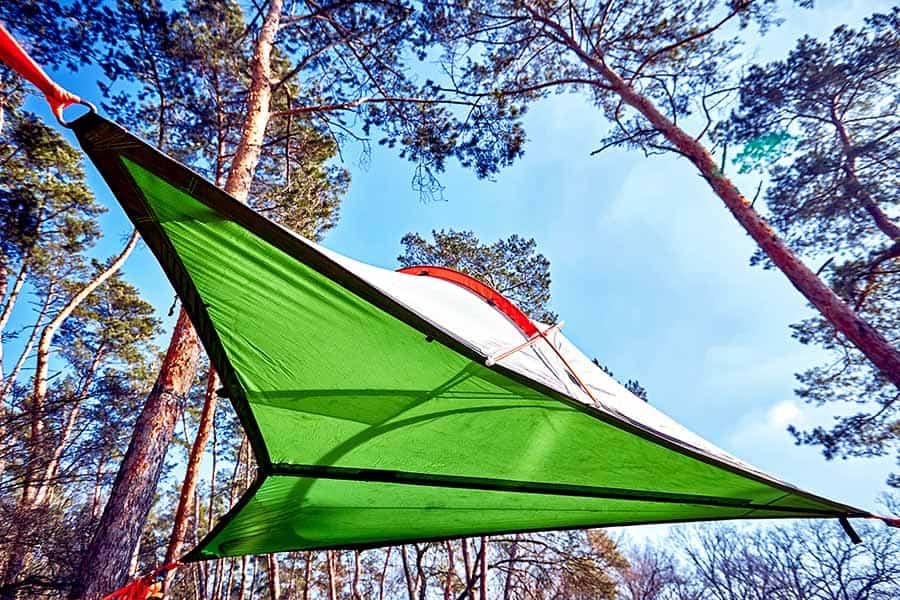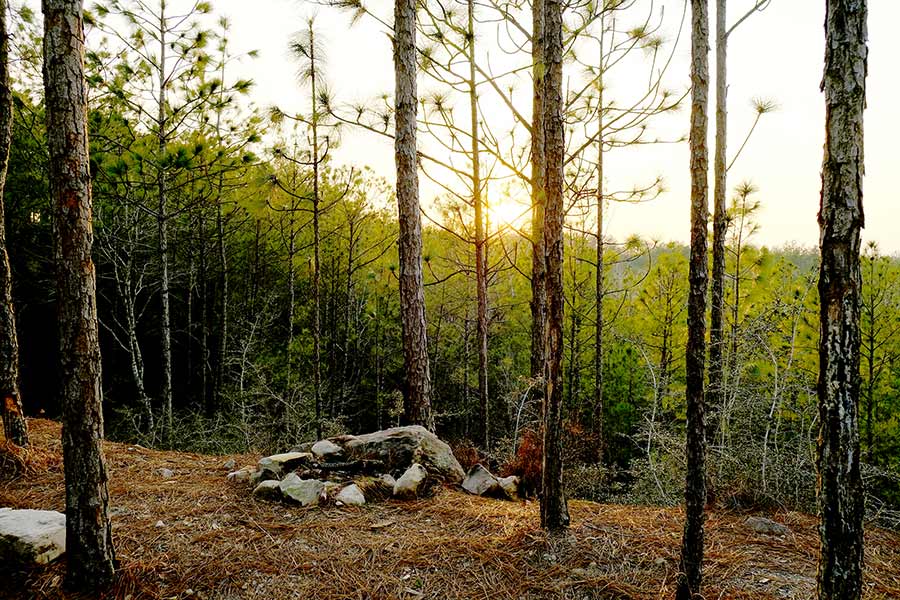
If you are looking for a unique and memorable camping experience, tree tent camping is a perfect adventure. With its incredible views, peaceful atmosphere, and fun activities, this form of camping will provide an unforgettable outdoor escape. But what kind of tree do you look for?
Some of the best trees for tree tent camping include hardwood trees such as oak, maple, and beech that are at least 12 inches in diameter at chest height. Other recommended trees include hickory, elm, cherry, and birch. These species are generally stronger and more resilient than softwoods like pine or spruce.
If you’re an avid camper, you’ve probably heard of tree tent camping. It’s a unique and fun experience that allows you to sleep among the branches and leaves of a tree. But before you can start, you need to find the perfect tree to set up your tent. In this post, we’ll explore what makes a tree suitable for camping and provide some of the best options.
Finding the Perfect Tree
Tree tent camping is a unique form of camping that provides an immersive, nature-filled experience. As the name suggests, it involves suspending a tent in a tree, providing elevation and separation from the ground.
Tree tents range from compact one-person tents to larger tents that can accommodate groups of four or more. This form of camping offers a variety of benefits, including increased privacy and feeling at one with nature. It also allows campers to reach spots that may be inaccessible to ground-based camping. However, it requires choosing suitable trees for the tent and understanding proper setup and safety.
Selecting a healthy tree capable of bearing the weight of camping gear and campers is crucial for tree camping. Here are some essential factors to keep in mind while choosing an ideal tree for camping:

1. Species
Tree species play a significant role in determining the suitability of a tree for camping. For example, hardwoods such as oak, maple, and beech are usually sturdier and more durable than softwoods like pine or spruce, making them a better choice for tree camping.
- Oak – Recognized for their robustness and durability, oak trees are a favored option for camping.
- Maple – Maple trees offer similar strength and sturdiness, featuring thick trunks and stout branches that can successfully hold up a tent.
- Beech – With smooth bark and reliable branches, beech trees are also an excellent choice for tent camping.
2. Age
Older trees generally have more stability and strength than younger ones. Aim to select trees with a minimum diameter of 12 inches at chest height. Safety should always be the top priority when picking a tree for camping.
3. Health
Prioritize selecting a tree that is healthy and devoid of any signs of disease or damage. Look for cracks, splits, or signs of decay on both branches and the trunk. And limbs that could fall on you and your tent.
4. Location
Opt for a tree positioned on level terrain and located a safe distance away from hazards, such as steep slopes, risk of flooding, or power lines.
The ideal tree for tree camping varies based on individual preferences and requirements. However, before erecting your tree tent, you should assess the tree’s stability and health while following the manufacturer’s safety guidelines and instructions.
Other Posts of Interest
- 31 Tips To Maximize Your Camping Cooler’s Efficiency
- 18 Van Camping Tips for Beginners
- Boondocking Safety: 23 Essential Precautions and Procedures
- Do Tents Often Get Stolen at Campsites?

Are There Any Trees That Are Unsafe for Tree Tent Camping?
While many trees are suitable for tree camping, there are some that are not safe to use due to their structure, health, strength, or location.
Here are some examples:
- Dead or diseased trees: Using dead or diseased trees is unsafe as they are more likely to break or fall, posing a potential hazard to both the tree camper and the tent itself.
- Shallow roots: Trees with shallow roots lack the required strength to support the weight of a tree tent and could possibly topple over, making them unsuitable for tree tent camping.
- V-shaped or split trunk: Trees with V-shaped or split trunks are less structurally sound than trees with a single solid trunk. These trees are at a higher risk of breaking and should be avoided when tree camping.
- Weak branches: Trees with weak or damaged limbs are prone to falling or breaking during intense winds or rainfall, thus unsuitable for camping due to safety concerns.
- Thin bark: Trees with thin bark are susceptible to harm from tree tent straps or other camping gear, making it essential to avoid using them during camping.
- High winds: Using trees in areas prone to high winds is not recommended, as the gusty winds can cause the tent and the tree to sway or even fall over, posing a significant risk to the campers.
- Lightning risk: Using trees for camping in areas at risk of lightning strikes is not recommended, as it can pose a severe danger to campers.
Just Hanging Out
In conclusion, if you’re looking for a unique and immersive camping experience, tree tent camping might be an excellent choice for you.
However, it is essential to ensure a suitable tree is chosen while following all safety guidelines and instructions, such as assessing the tree’s health and stability, avoiding hazardous areas, and setting up the tent correctly to make the experience enjoyable and safe. With the proper preparation, this way of camping offers an opportunity to connect with nature in a memorable way.






